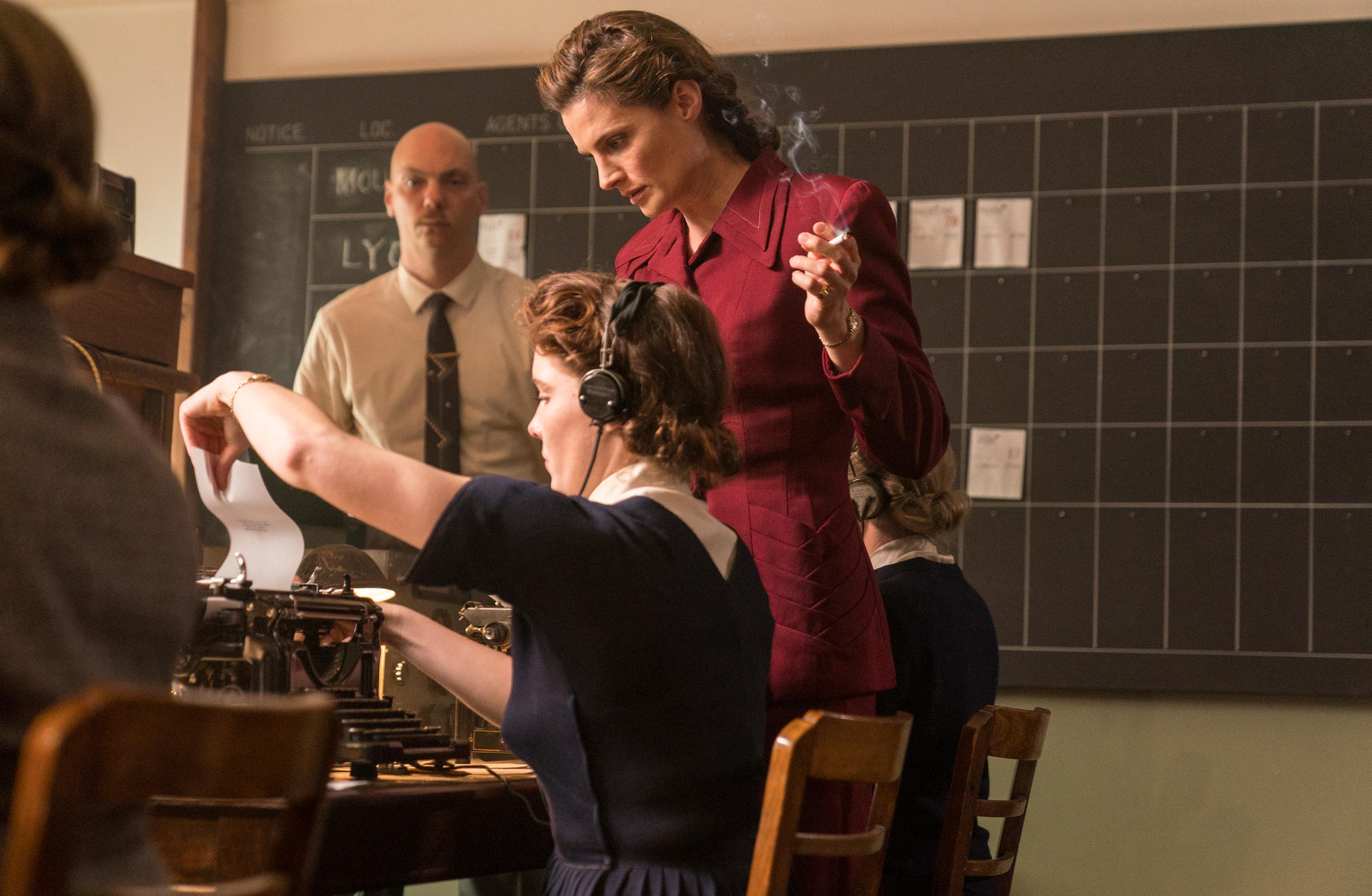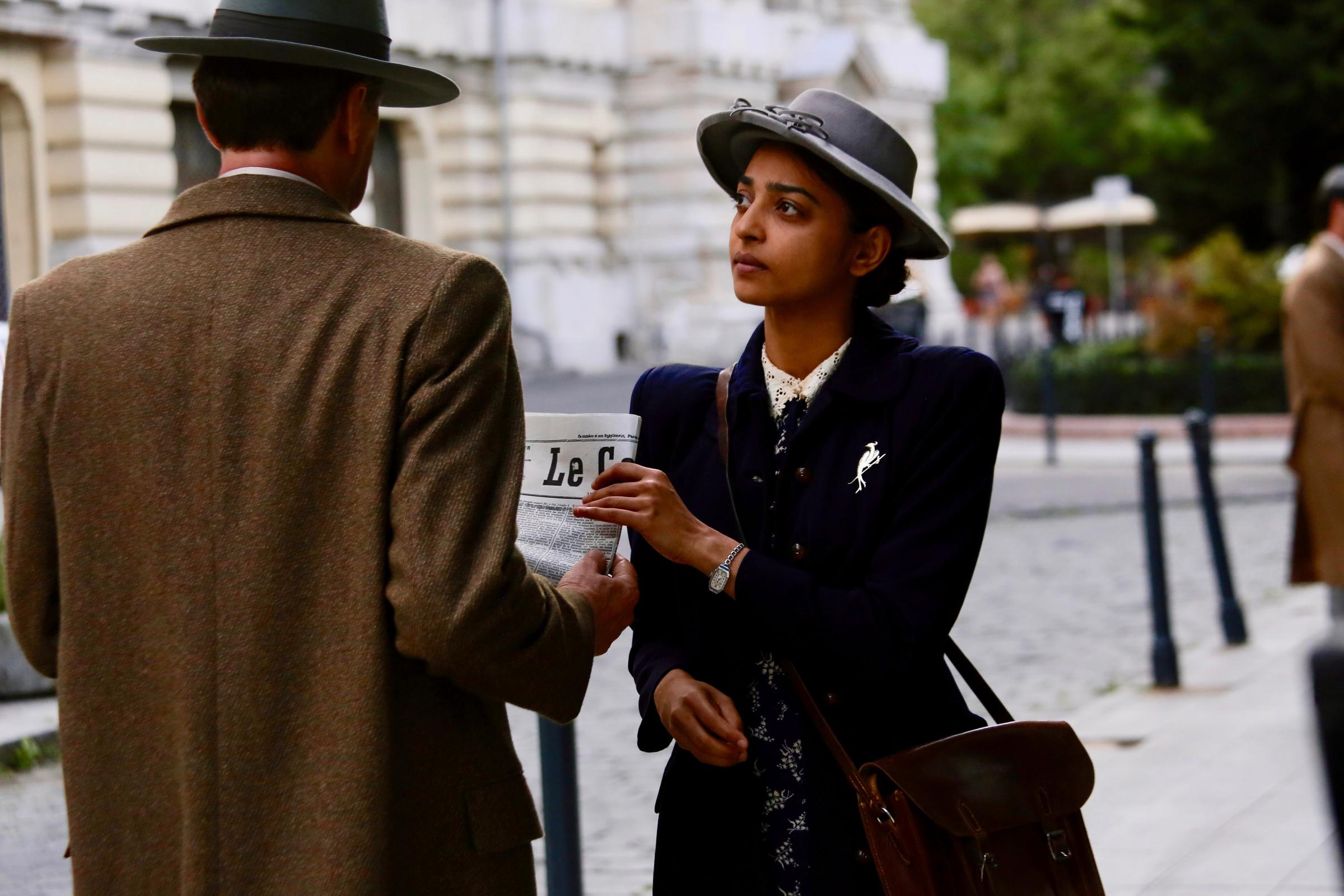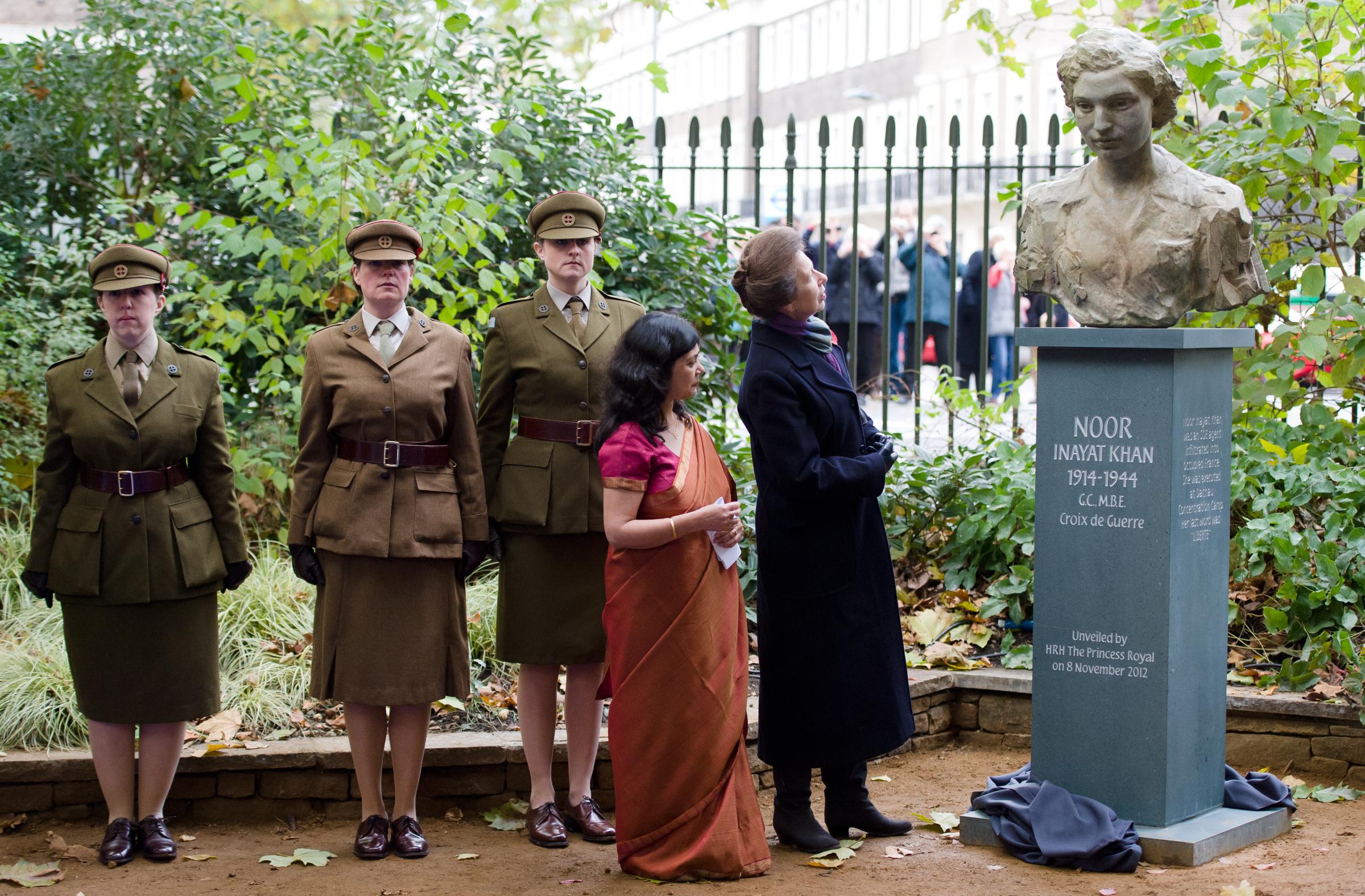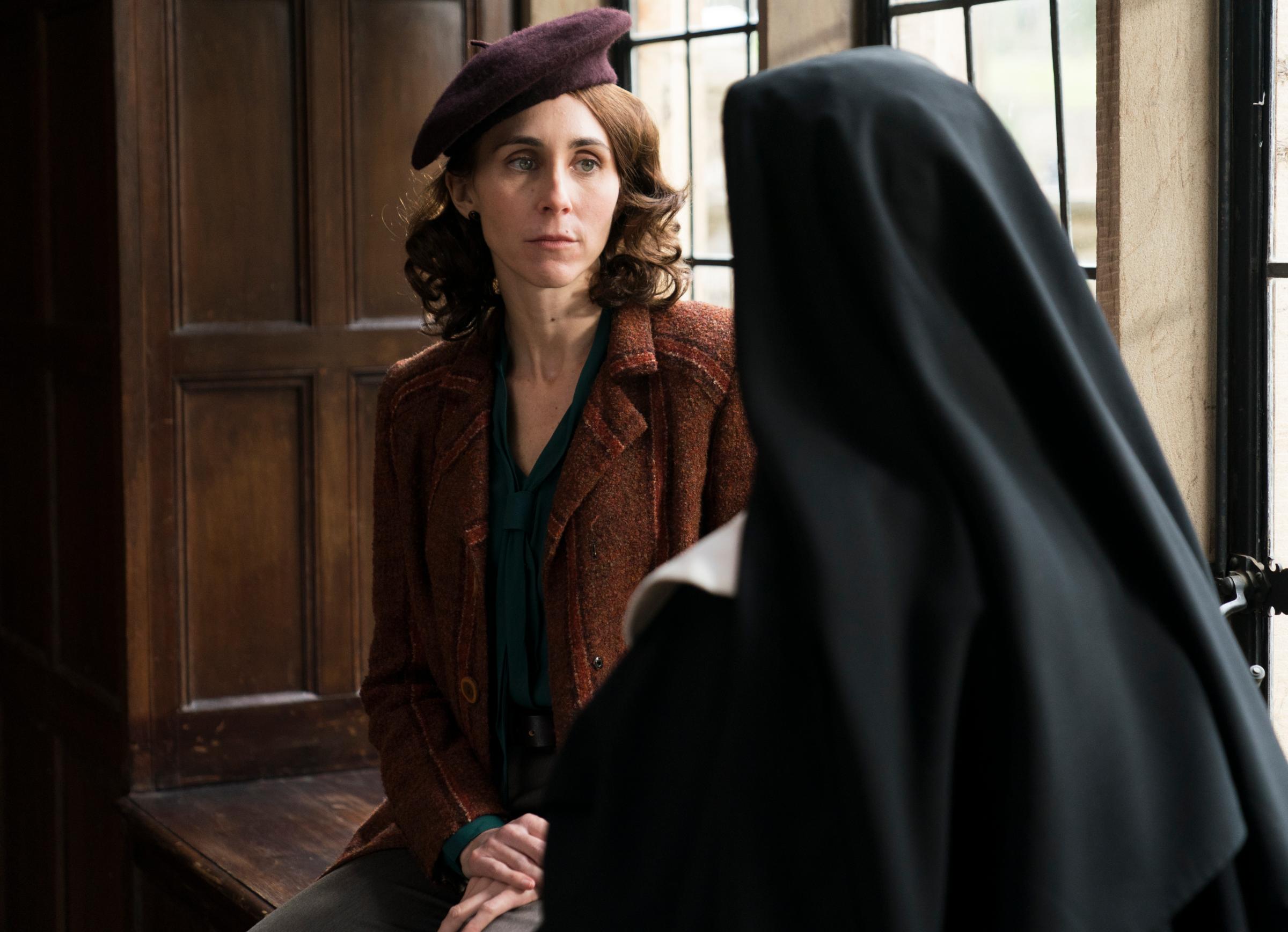The summer of 1941 was a bleak time for Britain and her European allies in the war. The Nazis were bombing key cities across the country in what came to be known as the Blitz, and much of Europe had fallen to the Germans, leaving Britain vulnerable. This made the work of the Special Operations Executive (SOE), and the actions of three key women within it, that much more important.
Established in June 1940 in London, the SOE was a volunteer force set up to wage a secret war behind enemy lines. Prime Minister Winston Churchill famously ordered the SOE’s agents to “set Europe ablaze” through espionage, sabotage and building a resistance network in occupied Europe. Dozens of women were recruited by the SOE and deployed as spies, including American agent Virginia Hall and Indian-British radio operator Noor Inayat Khan. Both women worked with Vera Atkins, the intelligence officer for F Section at the SOE, which was responsible for the recruitment and deployment of agents into France. The new film A Call to Spy, produced, written by and starring Sarah Megan Thomas as Hall and directed by Lydia Dean Pilcher, takes inspiration from the heroic stories of these two spies who made history, and the woman at the center of their secret operations.
The role of women as spies during World War II
Intelligence agencies realized fairly early on the important part women could play in wartime spying, in what had been traditionally considered the domain of men. The SOE itself focused on guerrilla warfare outside the ordinary theaters of conflict. Women were thought to be more inconspicuous as spies, and capitalized on this perception during the war, carrying out tasks and missions that men were unable to do. In the field, women could go unnoticed as couriers delivering vital messages, with one SOE dispatch from Holland noting that in 1944, women were rarely stopped and searched at checkpoints.
Read More: The Extraordinary Bravery That Made This Woman One of WWII’s Most Remarkable Spies
In some instances, women spies used their femininity and played up to stereotypes of fragility or helplessness in order to get out of sticky situations. As historian Juliette Pattinson notes in Behind Enemy Lines: Gender, Passing, and the Special Operations Executive in the Second World War, “several wartime accounts indicate that male agents were less resourceful and inventive than their female colleagues.”
The SOE, housed on Baker Street in central London—and sometimes referred to as “The Baker Street Irregulars,” “Churchill’s Secret Army” and the “Ministry of Ungentlemanly Warfare”—had deployed 39 women to Occupied France by the time of the D-Day invasions on June 6, 1944. Because it was crucial that they evade suspicion, F Section recruited agents who could speak French and blend into French life. Each agent was given a codename or an alias, and trained in specialist skills including wireless operation (as Khan did), how to maintain a cover story and how to burgle and pick locks.
Scholars have noted an enduring public fascination with the SOE and its women spies since the war, and that in some cases, myth and fact have blurred together to create inaccurate representations of the past. Record-keeping at the SOE was not always organized, and a lack of primary sources and evidence from the time has made it difficult for historians to gain a full picture of the group’s activities. In a 1986 interview, Vera Atkins said “that every scrape [of intelligence] was under lock and key, or destroyed.”
How Vera Atkins rose the ranks of the SOE

Born Vera Maria Rosenberg in 1908 in Romania, Atkins moved to London in 1933 and adopted her mother’s maiden name. She began as a secretary in the F Section in early 1941, and then became one of the top officers within the service, responsible for the “housekeeping” related to each agent and acting as a guiding figure for them. Atkins was also widely believed to be the inspiration for James Bond author Ian Fleming’s character Miss Moneypenny, secretary to the head of the Secret Intelligence Services.
“I’ve always found personally that being a woman has great advantages if you know how to play the thing right and I believe that all the girls, the women who went out, had the same feeling,” said Atkins in an oral testimony included in the 2008 book Forgotten Voices of The Secret War: An Inside History of Special Operations During the Second World War. When asked by biographer Sarah Helm what each of the SOE’s women agents had in common, Atkins replied, “Bravery…you might find it in anyone. You just don’t know where to look.”
SOE agents were trained to send messages back to London in a unique code, but in 1943, there were signs that the codes had been intercepted, and the Germans had started sending transmissions under the guise of the agents they had captured. However, these signs were missed by the intelligence services at Baker Street, resulting in the capture and killing of 27 agents, including Noor Inayat Khan. Although there has been speculation around potential oversight by Atkins, historians have concluded that the failure to pick up on the danger can’t be solely attributed to any one individual.
Even beyond the liberation of France in 1944 and the eventual dissolution of the SOE in January 1946, Atkins was steadfast in her search for the missing SOE personnel, which amounted to 118 people—all but one of whom had been killed. Atkins eventually traced all 117 and brought their killers to war crimes trials. Atkins was awarded the Croix de Guerre in 1948, appointed a CBE in 1997 and died in 2000.
Noor Inayat Khan was a princess who wanted to make a difference

Born in Moscow in 1914, Noor Inayat Khan’s life was colorful from the start. Her father was Inayat Khan, a descendent of a noble Indian Muslim family and a famous Sufi teacher and musician, and her mother was American poet Pirani Ameena Begum. The family, including Noor and her three brothers, moved to London during the First World War, and then to Paris, where Noor spent her formative years. She enjoyed music and writing, and was a published children’s author by the time the family fled France for Britain when war broke out in 1939.
While her family was committed to pacifism, Noor felt compelled to do something to help the war effort, and joined the Women’s Auxiliary Air Force. In her initial interview for the service, she said that she hoped her participation in the war effort might act as a bridge for understanding between Britain and India. Her skill at operating the radio during her time in the Air Force brought her to the attention of the SOE, which recruited her in late 1942.
In the SOE’s rigorous training program, supervisors developed a mixed judgment of Noor. “This student has obviously worked very hard and [shown] interest in the exercise, but, however, she must learn to be more discreet,” said one supervisor during a simulation exercise. With Atkins as her advocate, Khan became the first female radio operator to be sent from the U.K. to Occupied France in the summer of 1943, under the code name “Madeleine”.
Her work as a secret agent became crucial to the war effort in maintaining communications between London and the Resistance in Paris. According to official files, her work enabled arms and explosives deliveries to the resistance network, and her fluency in French and familiarity with Paris made her a valued agent. But by that time, the Paris Resistance network had already been infiltrated by double agents, and in October 1943, just a few months after she had arrived, she was betrayed and arrested in her flat in Paris, before being taken to German security headquarters. She did not have time to destroy the codes in her flat before the Gestapo found them, leading them to send decoy transmissions imitating her to the SOE in London.

Khan made two immediate escape attempts, and was later trapped in solitary confinement in a prison in southwest Germany for ten months, shackled by her hands and feet. In September 1944, Khan, along with three other female SOE agents, was abruptly transferred to the concentration camp at Dachau, where they were executed. She had not revealed any information or intelligence to her captors, and her last word was reportedly “Liberte.” Khan was posthumously awarded the George Cross, and the French Croix de Guerre. After a campaign by biographer Shrabani Basu, a statue in Khan’s memory was erected near her childhood home in London in 2012, and in August 2020, her family’s home was commemorated with an English Heritage Blue Plaque.
The heroic escape of Virginia Hall, the “Lady with the Limp”

Considered “the most dangerous of all Allied spies” by the Gestapo, Virginia Hall hailed from a wealthy family in Baltimore. She “took pleasure in defying convention,” writes Sonia Purnell in her acclaimed biography, A Woman of No Importance: The Untold Story of Virginia Hall, WW2’s Most Dangerous Spy, recounting how a young Virginia was ambitious, and set her sights on studying in Paris after attending George Washington University.
On a hunting trip in Turkey in 1933, Hall tripped and accidentally shot herself in the foot; the leg had to be amputated below the knee, and she used a wooden limb, which she nicknamed “Cuthbert.” Despite gaining experience in various clerk roles at consulates across Europe and having fluency in foreign language, Hall’s multiple attempts to become a diplomat in her own right with the State Department were all rejected on account of her being both a woman and disabled.
Frustrated, she resigned from her administrative job at the U.S. embassy in Estonia and volunteered in France as an ambulance driver in 1940, before the U.S. officially entered the war. A chance encounter with an undercover agent led to a connection with the newly formed SOE, and in August 1941, after training in Britain, Hall went to France under the guise of a reporter with the New York Post named Brigitte LeContre based in Lyon, becoming the first female agent to take up residence in France.
Her status as a journalist and her charming manner meant that she quickly established a network of contacts and was able to recruit more people to the Resistance. Under the codename “Germaine,” Hall also planned jailbreaks for other agents who had been captured, and in all, survived alone in the field for 12 months before other women spies were deployed to France. “This ‘gallant lady,’ her SOE commanders concluded, was almost single-handedly changing minds about the role of women in combat,” writes Purnell.
Hall’s activities in galvanizing the Resistance were successful, and had attracted the attention of the French Vichy Police and the Gestapo; but due to her adept use of disguises, the authorities never quite worked out exactly who ‘Germaine’ was. When the Germans moved to fully occupy France in late 1942, Hall sensed danger and escaped the Nazis by trekking a 7,500-foot pass through the Pyrenees to Spain despite being in incredible discomfort due to her prosthetic leg.
Hall then returned to London and continued her espionage work with the American Office of Strategic Services (OSS), the SOE’s American counterpart. Hall’s work with the OSS in 1944 and 1945 directly led to the liberation of large parts of France through her leadership of Resistance units, and she later became the only civilian woman in the war to receive the Distinguished Service Cross for “extraordinary heroism.”
More Must-Reads from TIME
- Cybersecurity Experts Are Sounding the Alarm on DOGE
- Meet the 2025 Women of the Year
- The Harsh Truth About Disability Inclusion
- Why Do More Young Adults Have Cancer?
- Colman Domingo Leads With Radical Love
- How to Get Better at Doing Things Alone
- Michelle Zauner Stares Down the Darkness
Contact us at letters@time.com



